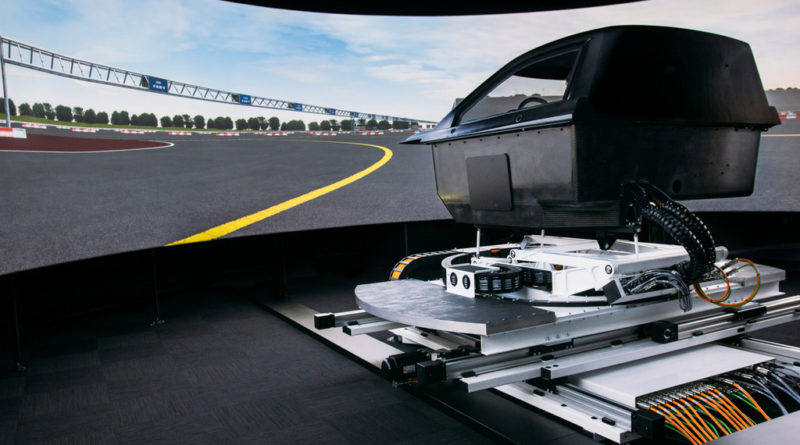The Importance Of Sound For Emotional Involvement In Driver in the Loop Simulation
The Importance Of Sound For Emotional Involvement In Driver in the Loop Simulation
In a far flung corner of Norfolk, a team of simulator engineers has been focussing not only the driving experience but also the aural one, too. Ansible Motion recognised the importance of sound for accurate driver feedback for its simulators and has been working with to HARMAN to make the most realistic simulation experience.
Simulators are increasingly commonly found within the automotive industry for developing new road and race cars. The blend of lower costs and more environmentally-friendly footprint, not forgetting the more consistent, lab environment means they are trusted bits of kit. However the effectiveness of a Driver-In-the-Loop (DIL) simulator (where a human is controlling the sim) hinges on its ability to fool the driver into believing they are driving a real car. Only then will the driver feedback offer valuable insight into how a vehicle behaves. ‘The driver’s emotional involvement is crucial in creating a high quality simulation experience,’ says Ansible Motion’s founder Kia Cammaerts. ‘The driver must receive the correct feedback that they would normally experience on the road in order to drive it like a real car on the open road.’

Right now creating a DIL simulator that replicates a car’s movements exactly with all the correct g-forces is impossible so simulator developers look elsewhere to enhance the virtual environment. Visual feedback and motion cues are very important; the driver must feel like they are in compelling surroundings with a real sense of velocity, while the motion cues must be delivered accurately and in a timely manner. Sprinkle these with haptic feedback through the steering wheel, seat and pedals and the experience is more compelling. That leaves sound and one that Ansible Motion is putting a particular effort into. ‘We feel so strongly about the importance of emotions and expectations that we embed detailed mathematical models of the human anatomy, such as the vestibular system, into the motion cueing and control algorithms of our dynamic simulators. Our motion control and hardware is extremely advanced, but it’s the support of sound that really brings this to life,’ claims Cammaerts.
Ansible Motion has been working with audio giants HARMAN, whose equipment has been picked to enhance the driver’s emotional response. ‘HARMAN has an in-depth understanding of sound, the importance of sound quality and the emotional reactions it can generate, whether that sound is a piece of stirring music you listen to on the move, rousing sound effects from a movie you watch at home, or an exhilarating engine roaring in your car. Such sounds have the ability to elicit an emotional response,’ says Matt Fisch, VP of Global Engineering, Global Automotive Audio in Harman’s Lifestyle Division. Whilst it might seem that sound is not a sense we rely on whilst driving Cammaerts disagrees; ‘Loud sounds such as driving over rumble strips or an engine’s roar activate our instinctive flight or fight reaction in the brain and can be crucial to ensuring human survival, even in the modern world,’ explains Cammaerts. ‘When you hear a car horn your brain and body quickly responds to ensure movement out of harm’s way, which is followed by tranquillising chemicals to calm you.’ It’s back to that emotional response that Cammaerts and his team often witness in the simulator with driver. ‘We regularly see emotional reactions in the simulator,’ adds Cammaerts. ‘If a driver has a shunt, you know by the way they react to ‘˜hitting’ something,Ã¥ that they were fully immersed in the driving experience.’
To deliver this experience AKG HSC271 professional headsets were specified, ensuring that sound of the highest quality is delivered to the driver inside the sim. ‘We chose to use the AKG product from HARMAN as it delivered the vast range of frequencies to the ear,’ says Cammaerts. ‘We chose headphones as they mask sounds of simulator that are not needed. That AKG HSC271 product is often used by broadcast engineers and is an extremely high performance product,’ claims HARMAN’s Fisch. ‘It is comfortable, gives optimum ambient noise reduction and fine audio quality. It was the perfect solution for use within the simulator. We want to help the driver forget that they are wearing headphones and to focus on the task in hand.’
The AKG headset high-performance condenser microphone allows the driver to deliver feedback to the engineers in the adjacent simulator control room, as well as allowing the engineers crew to speak to the driver. ‘This two-way communication is essential for safety and system operation and this high performance condenser mic ensures a clear output,’ suggests Fisch. The audio quality Ansible Motion strives for also contributes towards eliminating Simulator Adaption Syndrome, or SAS. ‘Simulator sickness is really prevalent, which is why it’s earned itself this special name,’ explains Cammaerts. ‘The human body is adept at controlling vehicles designed to suit our abilities but if we receive feedback that does not fit with what we expect then we become disorientated and confused. It’s a key element behind some drivers experiencing motion sickness in DIL simulators, but the accuracy of the sound feedback, which complements the visual and motion cues, helps to eliminate this.’
This glimpse into the way that future cars are developed shows that sound will continue to play an important part of their make up for some time to come and even if they are getting quieter, sound still has a big role to play.

